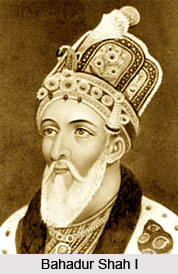|
The community though Tribal Research and Cultural Foundation-(TRCF) appealed to Union Ministry of Human Resources Development in a memorandum sent to Simriti Irani , Union HRD Minister and Chairman UGC, for a strong direction to all text book publishers including all Boards, University commissions and Councils to portray an accurate and factual picture of ‘Gujjar era’.
Giving details , Dr.Javaid Rahi, secretary TRCF said that foundation has written a detailed letter to HRD Ministry as some important parts of history of Gujjar era were missing in history books prepared by UGC, NCERT, CBSE and other Boards and sought immediate intervention in the issue.
He said in some books of History the ‘Gurjar Partihara’ period has been categoriesed under “Rajputana Period” which is away from the fact as Gujjars are a separate tribal identity and not fall under “Rajputs” which are another identity added although the Hindu Gujjars fall under “Kashataryas” but we are not Rajputs.
The communication sent by Tribal Foundation said that Union Minister of Culture to declare the main historical forts, temples, coins and other arts built by Gurjara-Pratihara kings as "Protected Monuments of India". ‘‘A list of most threaten monuments of Gujjar period to Government of India with an appeal for immediate steps for their restorations,’’ the memo reads.
The memorandum reads “the Gurjara Pratihara Empire- formed an Indian dynasty that ruled much of northren India from 6th to 11thcenturies. At its peak of prosperity and power (c. 836–910), it rivaled or even exceeded the Gupta Empire in the extent of its territory. The Gurjara Pratihara king in the 10th century was entitled as Maharajadhiraja of Aryavarta”.
The communication urged for a direction from HRD Ministry to all institutions that facts in this regard should be reflected properly in the curriculum History books adding to stop concealing the things related to Gujjar tribal identity.
The memo also identified some concealed and distorted potations about Gujjar era appeared in some books published by University Grant Commission, National Council of Educational Research and Trainings , School Boards of States and other institutions and demanded immediate .


